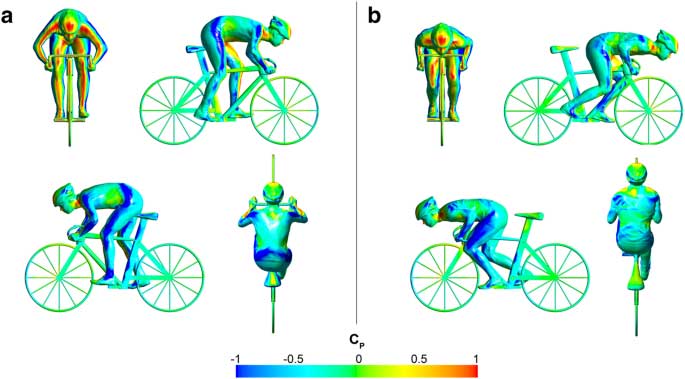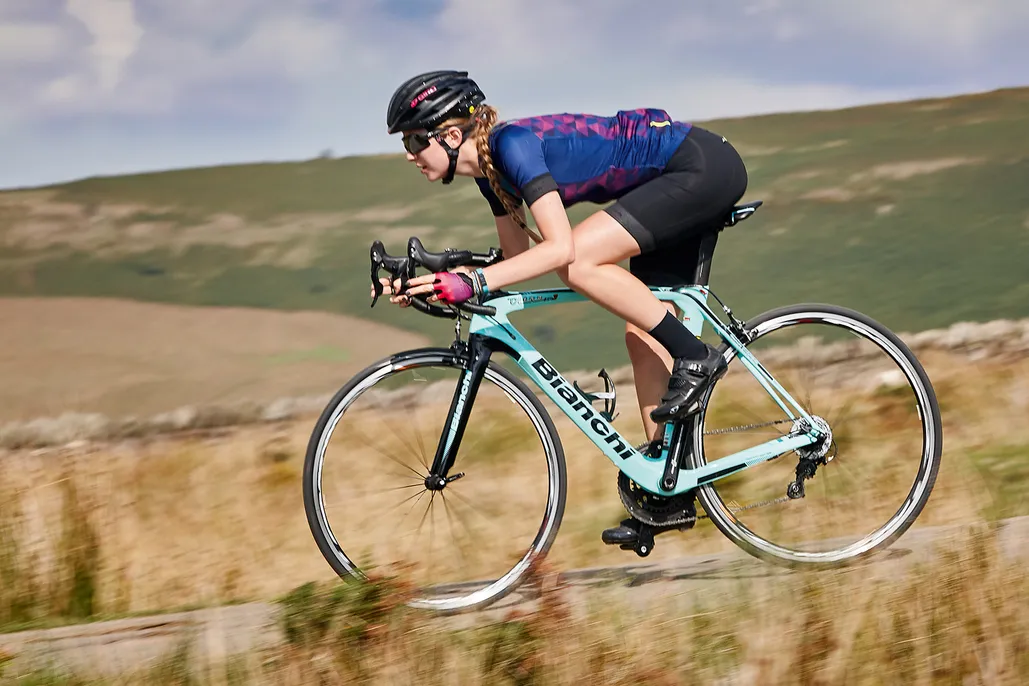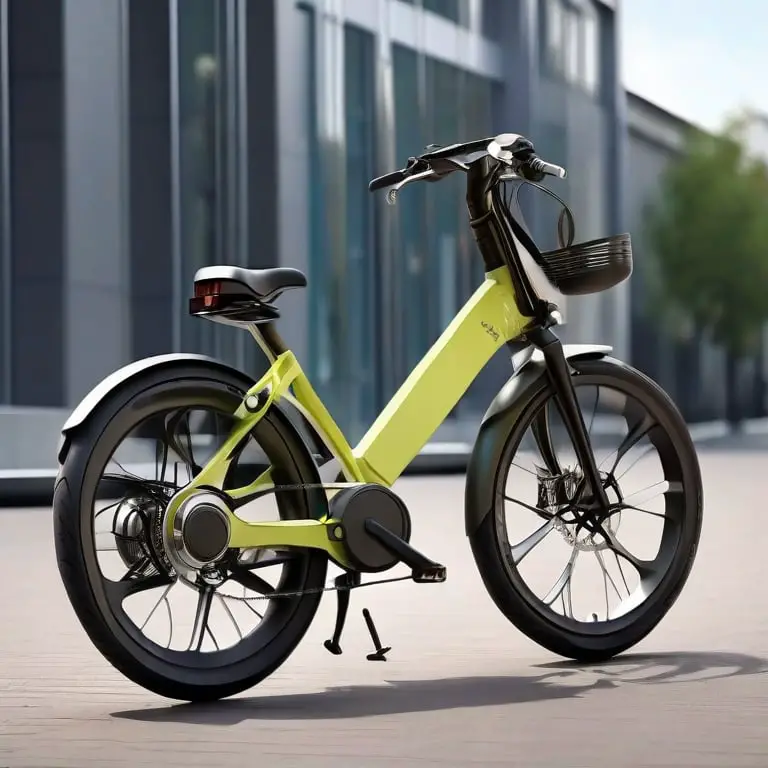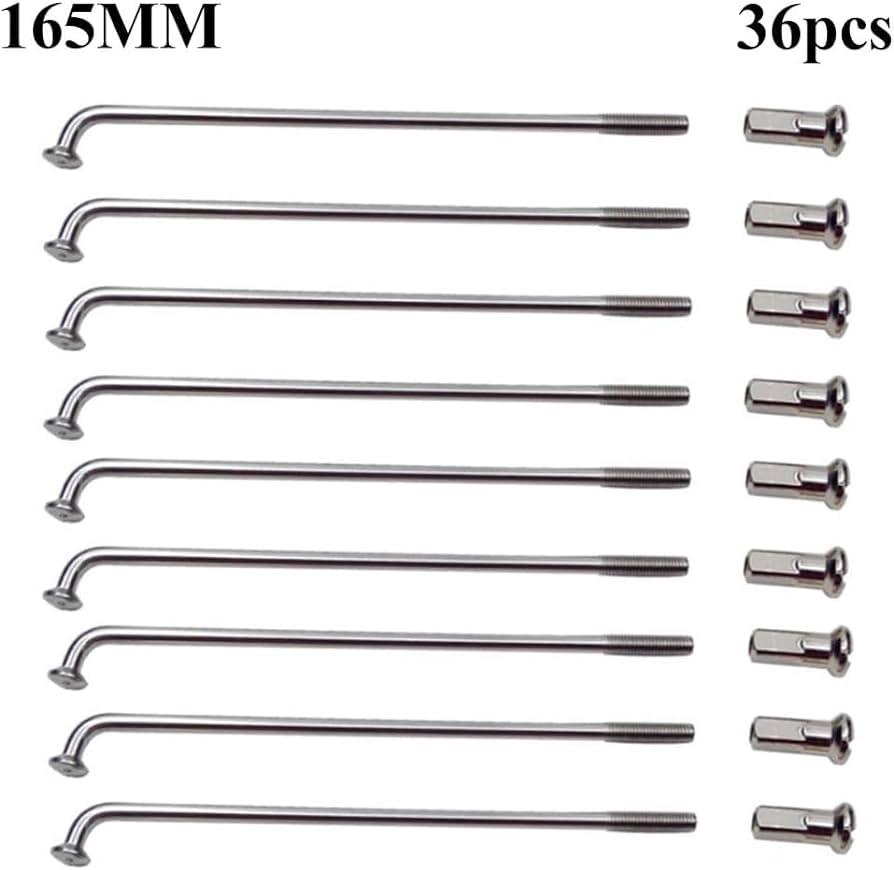Cycling Positions: Optimize Your Ride for Speed & Comfort!

As an affiliate, we may earn from qualifying purchases. We get commissions for purchases made through links on this website. You can read more on our Affiliate Disclaimer here.
Cycling positions affect performance and comfort. Riders choose positions to optimize efficiency and reduce injury.
Understanding the correct cycling positions is crucial for any bicyclist, whether they are a casual rider or a competitive racer. Proper positioning on the bike can lead to improved speed, endurance, and overall riding pleasure. It also minimizes the risk of strain and overuse injuries.
Different cycling disciplines require different positions; for example, a road cyclist will focus on an aerodynamic posture, while a mountain biker needs a more upright stance for stability on rough terrain. Mastering the art of positioning can enhance breathing, pedal stroke, and the bike’s handling. From the saddle height to the handlebar reach, each adjustment plays a role in creating the optimal setup for the cyclist’s body type and riding style. Investing time in learning about cycling positions reaps dividends in biking efficiency and enjoyment.

Credit: www.liv-cycling.com
Introduction To Cycling Ergonomics
Cycling ergonomics plays a vital role in riding efficiently and avoiding injuries.
Good posture on a bike can lead to improved performance.
Riders must find a balance between form, comfort, and speed.
Let’s dive into how proper cycling form enhances your ride.
Understanding The Importance Of Proper Cycling Form
Proper form matters for every cyclist.
- Reduces strain on muscles and joints.
- Maintains better control over the bicycle.
- Minimizes the risk of overuse injuries.
- Increases endurance by using energy efficiently.
The Interplay Of Comfort And Performance In Cycling
Comfort and performance are deeply connected.
A well-fitted bike and the right position lead to longer, faster rides.
| Aspect | Impact on Comfort | Impact on Performance |
|---|---|---|
| Seat Height | Reduces knee strain | Optimizes pedal power |
| Handlebar Position | Alleviates back and neck pain | Improves aerodynamics |
| Foot Placement | Ensures foot stability | Enhances power transfer |
Fundamentals Of Cycling Positions
Welcome to the dynamic world of cycling! Whether you’re just starting out or you’re a seasoned pro, understanding the fundamentals of cycling positions is crucial for both comfort and performance. Let’s explore the basics and strategies for different riding scenarios, ensuring you ride efficiently and with confidence.
The Neutral Position: Basics For Beginners
The neutral position serves as your home base on the bike. It’s the go-to posture for casual riding and offers a blend of comfort and control.
- Back straight: Keep your spine neutral without slouching.
- Bend elbows slightly: This helps absorb road vibrations.
- Relaxed grip: Hold the handlebars lightly to reduce tension.
- Level pedals: Balance your weight evenly for stability.
Always start with this position to build muscle memory for a safer ride.
Competitive Positions: Drops, Hoods, And Aero Bars
More advanced cyclists and racers use different hand positions to optimize speed and efficiency.
- Drops: Lower your center of gravity, perfect for sprinting or headwinds.
- Hoods: A mix of aerodynamics and accessibility, ideal for long rides.
- Aero bars: Extend your body forward, minimizing drag for time trials.
Mastering these positions is key for competitive cycling success.
Climbing And Descending: Tactics For Terrain
Terrain dictates your position on the bike, with distinct approaches for climbing and descending.
- Climbing:
- Stay seated to conserve energy.
- Lean forward slightly to maintain traction.
- Shift to lower gears to ease the effort.
- Descending:
- Move back on the saddle for stability.
- Keep your body low to reduce wind resistance.
- Use controlled braking, especially on turns.
Adapt your position with the slope to maintain control and speed.
Optimizing Your Position For Speed
Speed in cycling is not just about pedaling harder. It’s about the smart positioning of your body. The right cycling position can slice through the air and save energy. In this post, let’s dive into how you can optimize your position for maximum speed on your bike.
Aerodynamics: Minimizing Wind Resistance
Wind resistance is a cyclist’s biggest hurdle at high speeds. A good aerodynamic position helps you cut through the air more efficiently. Keep your body low and positioned forward. Your arms should be bent and close together. This reduces the area of your body facing the wind. Tuck in your elbows and keep your head down. It’s essential for achieving top speed with less effort.
Power Output: Maximizing Efficiency Through Position
Your legs generate power most effectively when you adjust your bike correctly. The saddle height should allow a slight bend in your knee at the bottom of the pedal stroke. Handlebars should be at a level where you can maintain a flat back. A comfortable, yet powerful position means you can pedal stronger for longer.
- Saddle height: just right for your leg length
- Handlebar level: allows a flat back
- Knee bend: slight at the bottom of each stroke
Position Adjustments For Sprinting And Time-trialing
Sprinting and time-trialing have unique position needs. Sprinters often rise out of the saddle, lean forward, and pull on the handlebars for more power. They focus on quick, explosive bursts of speed. For time-trialing, a more static position works better. Riders stay low and stretched out. The goal is to maintain a constant, high-speed over a distance. Setting up time-trial bars helps achieve this position.
| Activity | Position |
|---|---|
| Sprinting | Out of the saddle, lean forward |
| Time-Trialing | Low and stretched out |
Prioritizing Comfort On Long Rides
Welcome avid cyclists to our insightful journey into maximizing comfort for long rides. Embracing the joy of cycling often involves spending extended periods of time perched upon your trusty two-wheeled steed. To ensure every moment is enjoyable, let’s delve into the essentials of finding your perfect riding position. Comfort isn’t a luxury; it’s crucial for endurance and performance.
Balancing The Body: Ergonomic Considerations
Understanding your body’s ergonomics is the first step to a pain-free ride. An effective cycling position optimizes both power and comfort.
- Keep your back slightly bent to reduce strain.
- Align your knees directly over the pedal spindle for efficient pedaling.
- Avoid locking your elbows; maintain a slight bend to absorb shocks.
Equipment Adjustments: Saddle, Handlebars, And Pedals
Tweaking your bike’s components can make a huge impact on comfort levels.
| Component | Adjustment | Benefit |
|---|---|---|
| Saddle | Height and tilt | Reduces hip and back discomfort |
| Handlebars | Height and reach | Minimizes shoulder and neck strain |
| Pedals | Cleat position | Improves foot alignment and power transfer |
Recovery Positions: Reducing Fatigue During Endurance Rides
On long rides, shifting your position occasionally can promote circulation and prevent fatigue.
- Stand on the pedals periodically to stretch your legs.
- Sit up straight to relieve pressure and enhance breathing.
- Change hand positions on the handlebars to avoid numbness.
Remember to listen to your body and adjust as needed to maintain comfort throughout your ride.
Personalizing Your Cycling Position
Personalizing your cycling position is key to enhancing comfort and performance. A tailored fit not only boosts your efficiency but also minimizes the risk of injury. Understanding your body’s unique needs allows you to optimize your ride for a better cycling experience.
Bike Fitting: Tailoring Your Ride To Your Body
Bike fitting is a precise science. It involves adjusting your bike to match your body’s dimensions. Professionals often use a combination of tools and experience to achieve the perfect fit. Critical adjustments include:
- Saddle height and position: Ensures optimal leg extension.
- Handlebar height and reach: Affects your torso angle and comfort.
- Pedal alignment: Aligns with knees and feet to avoid strain.
A personal bike fit session can lead to surprising improvements in your cycling performance.
Incorporating Flexibility And Strength Training
Flexibility and strength greatly impact your cycling position. Enhanced flexibility improves your range of motion, allowing a more aerodynamic posture. Strength training promotes a stable core, essential for efficient power transfer. Include exercises like:
| Flexibility Exercise | Strength Exercise |
|---|---|
| Yoga stretches | Planks |
| Hamstring stretches | Squats |
Regular training sessions contribute to a resilient cycling stance.
Listening To Your Body: Recognizing Signs Of Poor Positioning
Staying attuned to your body’s feedback is crucial. Signs of a poor bike position include:
- Knee or back pain: Could indicate an improper saddle height.
- Numbness in hands or feet: Often results from undue pressure.
- Fatigue: May suggest inefficient positioning.
Address these issues promptly to prevent long-term discomfort.

Credit: bestbikeadvice.com
Advanced Techniques And Equipment
Mastering advanced cycling techniques and equipment is critical for taking your performance to the next level. In competitive racing, small improvements in your position can lead to significant gains. Let’s explore these advanced strategies and how they can give you an edge over the competition.
Utilizing Position For Racing Tactics
Racing tactics in cycling are as much about strategy as they are about speed. A rider’s position directly affects aerodynamics, energy conservation, and overall race dynamics.
- Drafting: This technique involves riding closely behind another cyclist to reduce wind resistance.
- Attacking: Choosing the right moment to move to the front can catch other racers off guard.
- Climbing: Position affects gravity’s pull, thus altering your climbing strategy can conserve energy.
Innovations In Cycling Gear To Enhance Position
Technological advancements have given rise to new cycling gear designed to optimize position and performance.
| Equipment | Benefit |
|---|---|
| Aero Helmets | Minimize drag |
| Skin Suits | Reduce air resistance |
| Aero Bars | Improve arm positioning |
Case Studies: What We Can Learn From Pro Cyclists
Examining professional cyclists and their techniques unveils valuable insights. Here are some highlights:
- Proper Seat Height Adjustment: This has a direct impact on power output and comfort.
- Wind Tunnel Testing: Pros use this to refine their positions for the best aerodynamics.
- Video Analysis: Teams study footage to improve form and strategy during races.

Credit: www.bikeradar.com
Frequently Asked Questions For Cycling Positions
What Is The Correct Cycling Position?
The correct cycling position involves a slight bend in your elbows, knees aligning with the pedals, a neutral spine, and a comfortable reach to the handlebars. Ensure your seat height allows a slight knee bend at full pedal extension.
What Is The Perfect Cycle Position?
The perfect cycle position aligns the rider’s height and bike dimensions for comfort and efficiency. Adjust the saddle, handlebars, and foot placement to ensure smooth pedaling and control. Proper bike fit prevents injury and enhances cycling performance.
What Is The Bike Position Called?
The term for bike position is “riding posture” or “cycling position. ” It describes how riders sit and hold themselves on their bicycles for comfort and efficiency.
Is 30 Minutes Of Cycling A Day Enough?
Yes, 30 minutes of cycling daily can be sufficient for general health benefits, enhancing cardio fitness, and aiding in weight management. It meets the recommended moderate exercise guidelines.
Conclusion
Embracing the right cycling position can transform your ride. It enhances both comfort and speed. Tailor your stance to fit the journey and terrain ahead. Perfection in posture means more joy and less strain on the road. Remember, practice makes perfect – keep pedaling towards your cycling goals.

Hels On Wheels aka Helen Dainty is a full-time global hobo cycling around the world on a budget of AU$ 100 per week. She left the UK in 2004 and has been living out of a backpack ever since.




